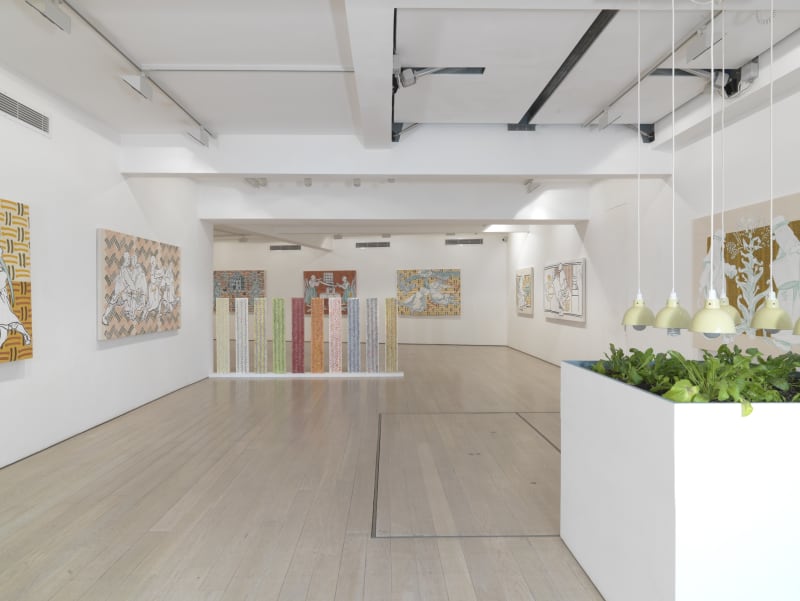“For the paintings in this exhibition I have used a combination of plants (and insects) originating from both Europe and Central America. I have dyed and mordant-printed calico for the backgrounds, and painted on top using plant pigments that I have made with both European and Mesoamerican technologies.”
Annely Juda Fine Art is delighted to announce an exhibition of new works by Sigrid Holmwood titled ‘The Peasants are Revolting!’ The exhibition will be on our third floor and will run from 24th May – 8th July 2017.
Holmwood's work focuses on the ways in which the hand-making of materials generates meaning and resists the alienation of industrialised life. Holmwood uses the figure of the peasant - in her paintings but also through an adopted persona - as a means to highlight the links between the exclusion of European peasant culture and the suppression of indigenous pigment making technologies and practices through Western modernity and colonialism.
Works in this exhibition stem from Holmwood’s research for the construction of a pigment garden in Almería, Spain, at the arts-led field research centre Joya: arte + ecología. The cochineal insect (found to be infecting cacti in the region) produces a crimson dye and was, during the colonial era, imported from Mexico to Spain. Holmwood uses this pigment in these paintings, along with a version of Mayan blue; a remarkably stable pigment that is believed to have been invented by the Mayans around the year 700. The practice of making the pigment was subsequently lost in the wake of colonialism and has only recently been re-discovered through archaeology and analytical chemistry. Holmwood has re-adapted and hybridised the technology by making Mayan blue from the European indigo-producing plant, woad.
The social upheaval of the sixteenth century, as a consequence of the development of capitalism within Europe and colonialism outside of Europe, resulted in alternative world views and uprisings. Counter revolutionary movements aimed at subduing the ‘peasant’ class emerged, such as the German Peasants’ War and the Great Witch Hunts, which in turn led to the suppression of indigenous and peasant knowledge of plant life. By tracing the trajectory of plants and pigments during the colonization of the New World, Holmwood looks at historical pigment recipes and how they intertwine with the way in which the image is used to construct the self. In our own turbulent times, Holmwood hopes that reigniting historical practices may point to alternative futures.

